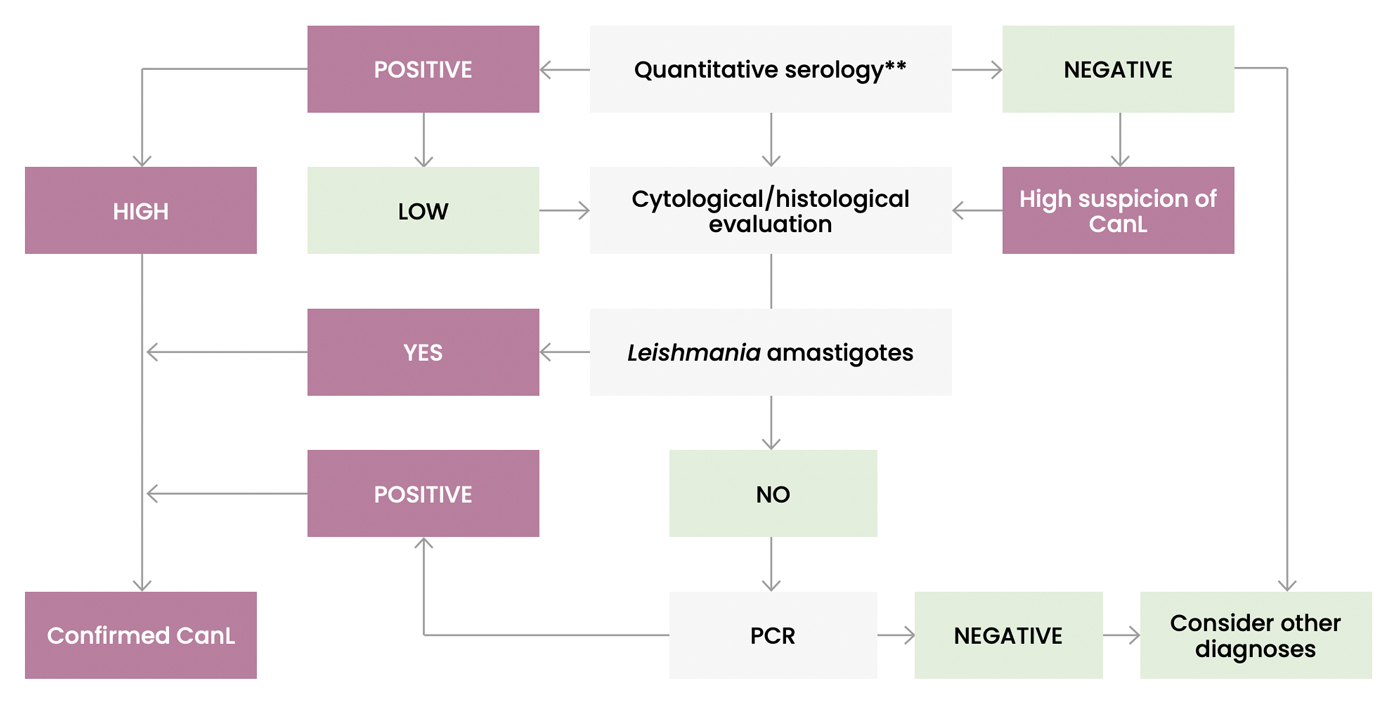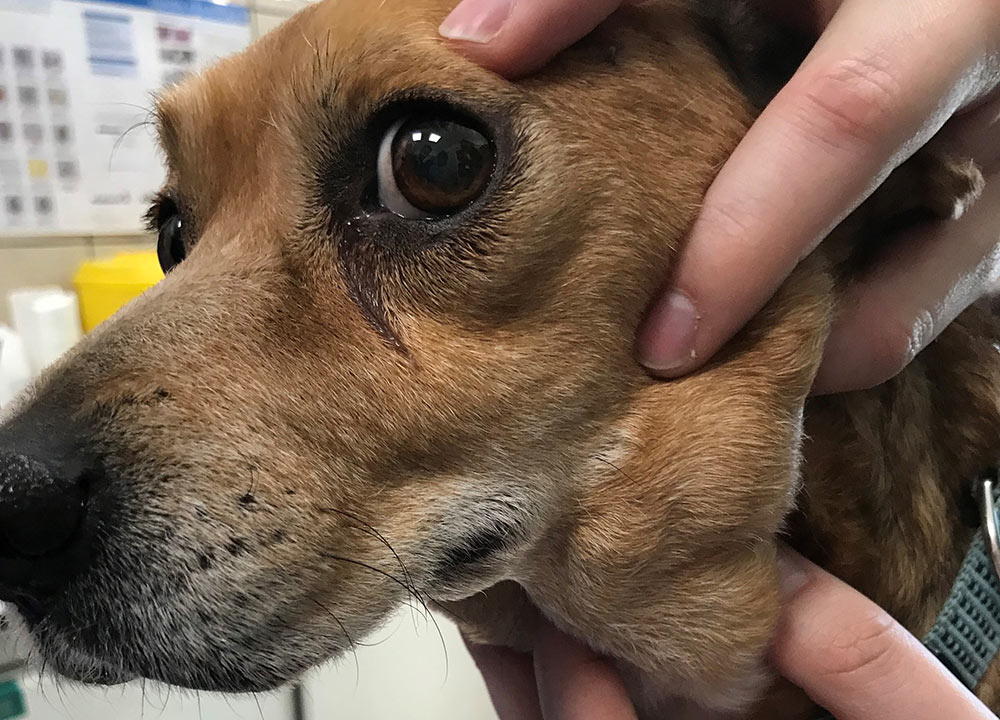Diagnosis
Diagnosis is based on clinical signs and/or clinicopathological abnormalities compatible with disease combined with demonstration of L. infantum infection, by using serological and/or molecular techniques. However, cytology and histology combined with immunohistochemistry can be used to directly correlate Leishmania infection with the disease.
Main purposes for the diagnosis of L. infantum infection:
A. Confirm the disease in a dog with clinical signs and/or clinicopathological abnormalities compatible with leishmaniosis (Table 2 and Figure 1).
B. Screening of apparently healthy dogs living in or travelling from endemic areas:
- blood donors
- breeding dogs
- dogs prior to vaccination against CanL
- dogs admitted for the annual serological test for CanL
- imported dogs (from endemic areas)
Diagnostic approach
Figure 1. Flow chart for the diagnostic approach to dogs with suspected clinical signs and/or clinicopathological abnormalities compatible with leishmaniosis*
Clinical signs and/or clinicopathological abnormalities compatible with leishmaniosis

CanL: Canine leishmaniosis – PCR: Polymerase chain reaction
* This flow chart cannot be applied In case of recent vaccination against CanL with a vaccine known to induce cross reacting antibodies.
** Cytology could be performed at the same time in any damaged tissue or biological fluid.
Infected healthy versus infected sick dog
Dogs with clinical leishmaniosis are those presenting compatible clinical signs and/or clinicopathological abnormalities, and having a confirmed L. infantum infection. It should be emphasized that a dog may be sick due to another disease with similar clinical signs and simultaneously infected by L. infantum. Exclusion of other differential diagnoses is recommended in infected sick dogs.Dogs with subclinical infection (infected but clinically healthy) are those that do not present neither clinical signs on physical examination nor clinicopathological abnormalities on routine laboratory tests (CBC, biochemical profile and urinalysis) but have a confirmed L. infantum infection.
Diagnostic methods
Parasitological: cytology, histology/immunohistochemistry and culture.Molecular: conventional, nested and real-time polymerase chain reaction (PCR).
Serological: quantitative assays (IFAT and ELISA) and qualitative preliminary rapid tests.
What samples and techniques should be used for PCR?
Any lesional tissue or abnormal biological fluid compatible with L. infantum infection.Target organs: bone marrow, lymph node, spleen, skin.
Less invasive samples: conjunctival swabs.
The sensitivity of the PCR assay is much lower when performed on these samples: blood and urine.

